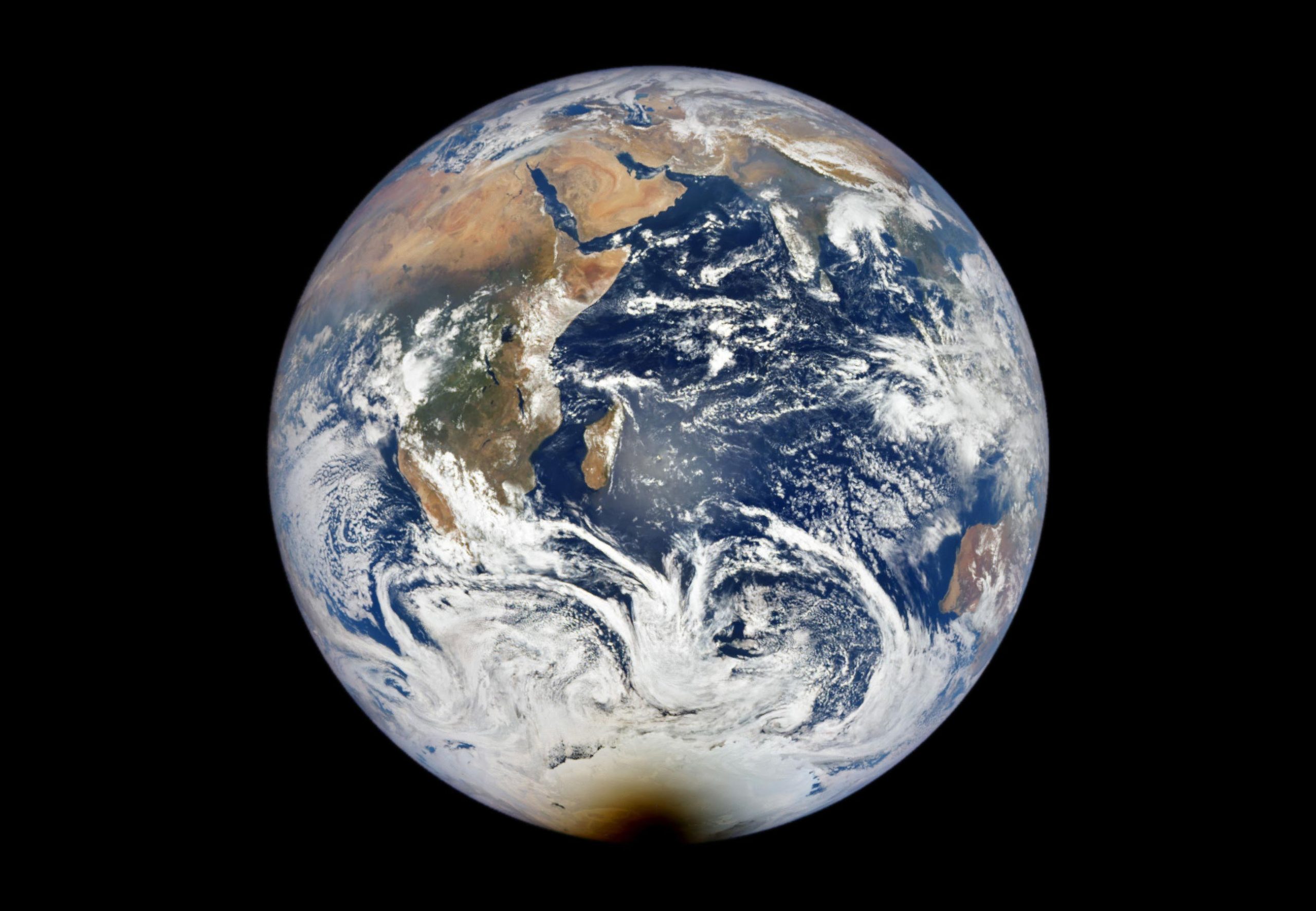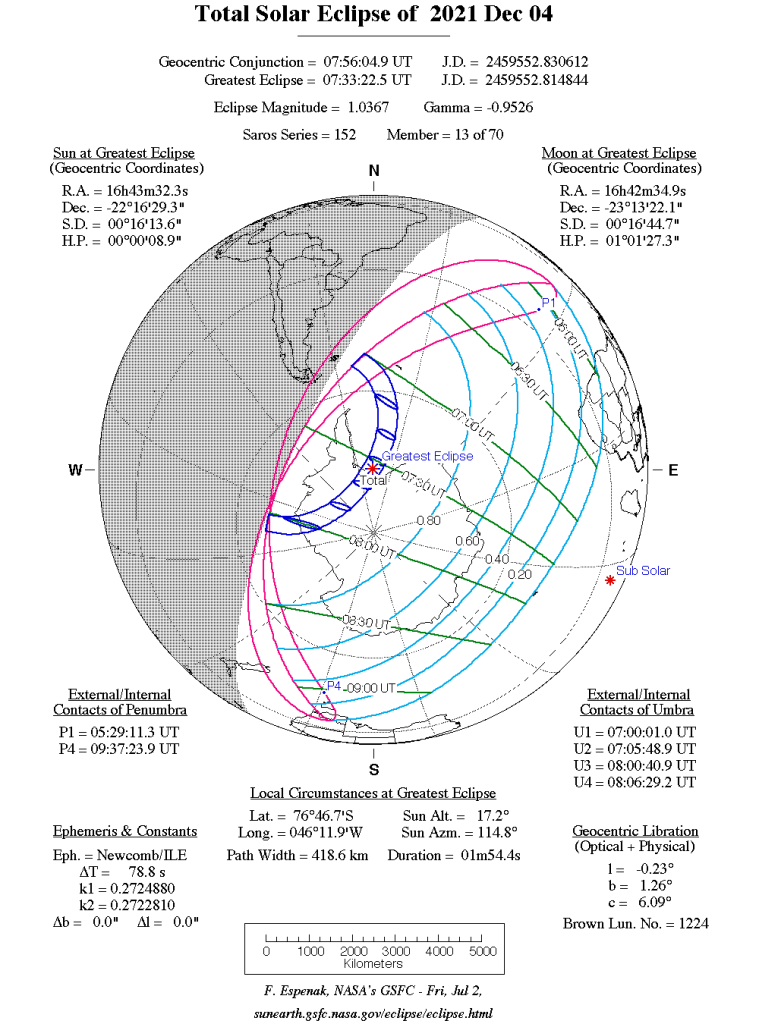By Sara E. Pratt, NASA Earth Observatory
December 7, 2021
The only total solar eclipse of 2021 was visible from Antarctica, where the Moon blotted out the Sun for nearly two minutes.
On December 4, 2021, a handful of people in Antarctica were treated to clear views of a total solar eclipse, the only one to occur in 2021. A partial eclipse was visible in other parts of the Southern Hemisphere. The eclipse reached totality at 07:44 Universal Time (UTC) and lasted just under 2 minutes, darkening the Antarctic summer skies at a time when the Sun is above the horizon for several months.
During a total solar eclipse, the Sun, Moon, and Earth line up in that order, with the Moon between the Sun and Earth. The Moon casts a shadow on part of Earth’s surface. For those people located in the center of the Moon’s shadow, the Sun is either fully or partially blocked from view and the sky becomes very dark. Viewers with clear skies and the right equipment or eyewear can often observe the Sun’s outer atmosphere, or corona. Normally, it is obscured by the brightness of the Sun’s surface.
The above image was acquired during the eclipse by the Earth Polychromatic Imaging Camera (EPIC) aboard the Deep Space Climate Observatory (DSCVR). The satellite has a constant global view of Earth from its position at Lagrange Point 1, a gravitationally stable point between the Sun and Earth about 1.5 million kilometers from Earth. In this view, acquired at 07:58 UTC, the Moon’s shadow can be seen falling on Antarctica.
The natural-color images below were acquired by the Operational Land Imager (OLI) on the Landsat 8 satellite on December 15, 2019, and December 4, 2021, respectively. Both images show the Pensacola Mountains, south of the Ronne Ice Shelf. The December 2021 image was acquired at 07:37 UTC, a few minutes before the eclipse reached totality. Note the slight difference in the amount of darkness from south to north, as the south-facing slopes received some faint sunlight from the horizon.
Total solar eclipses in the polar regions are rare because they comprise less of Earth’s land area and because the Sun only lights each pole for part of the year. The last total solar eclipse in Antarctica occurred in November 2003. The next will occur in December 2039.
A two-hour video of the total solar eclipse—as seen from Union Glacier, Antarctica—was streamed on NASA TV. It was filmed by members of the J.M. Pasachoff Antarctic Expedition, who also collected data on electrical activity in the ionosphere during the eclipse.
NASA image courtesy of the DSCOVR EPIC team. NASA Earth Observatory images by Joshua Stevens, using Landsat data from the U.S. Geological Survey.







